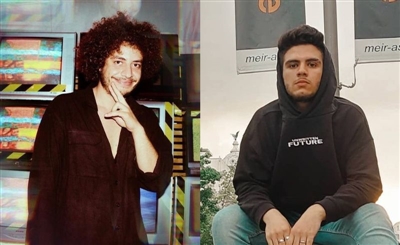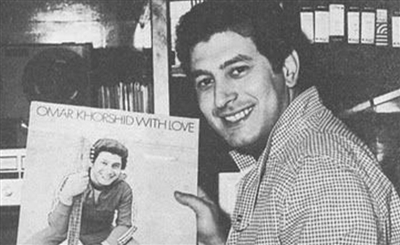The dream
begins slowly, with a meditative frequency drifting in like a plaintive train
horn emerging from the darkness, accompanied by a few select notes, pulses of
electricity in space that shoot straight to whatever vessel it is in us that
holds empathy. This sonic atmosphere expands through a range of textures and elements,
bird song and unnerving low-ends, the rattling of a cart on train tracks. Dina’s
voice swims in over a bed of glitchy beats, a ghost riding an ominous swell of
beautiful locomotive noise.
This is
just the introduction to Slumber (Manam in Arabic), Egyptian
singer-songwriter and producer Dina El Wedidi’s second album, and easily one of
the most creative and important pieces of work to come out of the region this
year. For those familiar with the Giza born icon, this album is a brash and
invigorating departure from her first album Turning Back (2014),
garnering her millions of fans in Egypt, and a growing reputation internationally.
Somewhere after her time in the Nile Project, which she participated in from
2012-2015, and international tours in Europe, the Middle East, and the United
States, Dina began reassessing herself creatively, turning down a very
different track.
Like many
artists of her generation that come from a more traditional band background,
Dina found herself drawn to the solitude and liberation that comes with solo
production, and she began immersing herself in this software. At the same time,
a friend of hers was working on a website, archiving the sounds of Egypt’s
railways. When he found out about Dina’s interest in production and sampling,
he immediately asked her to join him in collecting these field recordings, and as
they rode the train from Cairo to Alexandria, Dina’s life would take a very
sharp turn.
Mulling
over the samples later on, Dina was engrossed by their richness. She rode the
train again, this time from Cairo to Luxor and Aswan, recording every sound she
could: the rattling of the tracks, windows shaking, whistles, conductors
yelling, the calls of people hawking goods, the whispers of passengers, birds
at dawn – “there are a lot of weird horns. Usually you have one horn, and it’s
almost the same, but in Egyptian trains, there are different sounding horns.
When you hear the horn from the sleeping train, from inside it’s totally
different from when you’re outside, and there are different codes the driver makes
with the horn.” She threw them all into Ableton, and began an experiment that
would consume her for the next few years, an experiment called Slumber.
She spent
the first year without expectations, warping the sounds she sourced from the
train’s ecosystem, and assembling a library. “The challenge for me was to see
the train as an instrument” she says. “I only have this one thing, and I’m
going to use it as my instrument. It takes a lot of time to develop it; to tune
the train, to make all of the sounds out of it.” Indeed, no one would know that
this entire album, asides from her voice obviously, is crafted 100% from the sounds
of trains, and their surrounding ambience.
At the
same time that Dina began her journey into the world of the train, she was
fixated on the theme of time, observing the fluctuations in its movement and
contemplating its meaning. The train’s entrance to her world was prodigious,
proving to be the perfect vehicle for her to explore this concept. “I had this
question of whether we are controlling time, or time is controlling us. At the
same time, I discovered that the train is a symbol for this concept of time. It
takes you from one time to another, and it takes you from your world to another
world.”
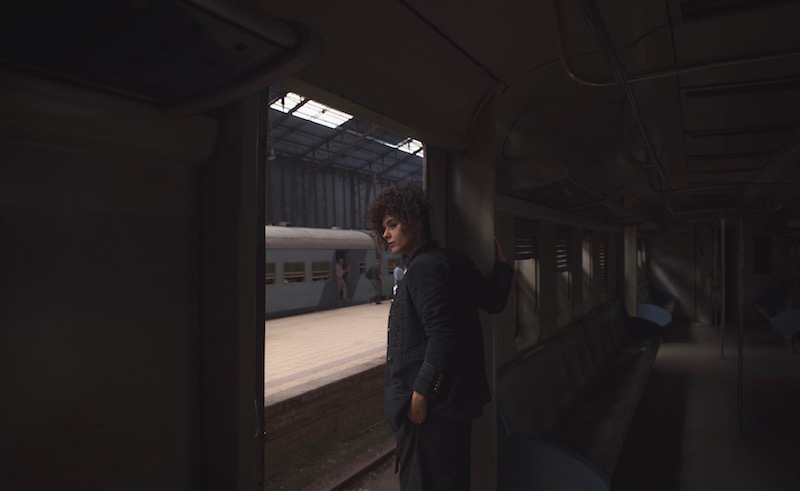
Within
time, there are wormholes, elements that warp the “linearity” of it. One is
travel. Another, and possibly the most powerful form, is sleep, and within
sleep, this can intensify even more with dreaming. Inside a dream, you can live
for hours or days, and wake to find mere minutes have passed. In Slumber, which
she calls a “30-minute short nap,” Dina puts all of these elements together. “I
think it’s called Slumber because when we’re sleeping, we are facing
ourselves more. When you are dreaming, you are only with your mind. You go
between conscious and unconscious, so you face it inside of a fantasy.” The
album feels exactly like that, the psychedelic liminal plane that is accessed
when you are between deep sleep and wakefulness, made even more disorienting by
the element of travel.
Her
decision to make the album inside this mindset was conscious; a deliberate
metaphysical separation from the image that has defined her in the mind of her
audience. “For me, I made the album inside of a dream, because I am very afraid
– people have an image of me and my work, and I need to be free from all of these
images. This is why I wanted to make this album when I’m asleep, not awake.”
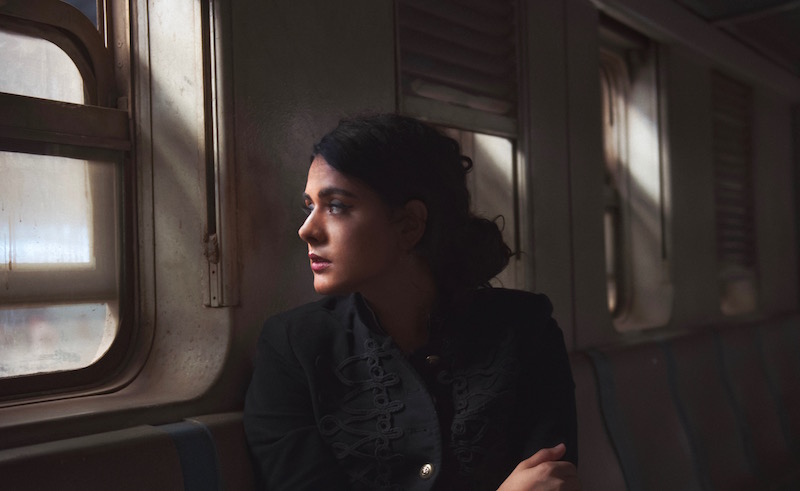
Though
here Dina means that the album is set inside a dream, she also claims to have
been in another realm throughout the entire process of making it. “I was so
high from the train…It took me to a totally different world, and it took me a
long time to return to the ground and handle my life again. That was happening
while traveling from Egypt to Paris and Berlin, and the many places I had to
cross to complete this album.”
The album
takes place in this world – this nap on a train – and progresses through seven
stations. The train stations, or tracks, are symbolic of different themes:
love, limitation, fear, the time machine, anger and imagination. It begins with
“Slumber”, a calm instrumental opening that introduces her experimentation with
train sounds, before trailing into the second track. “The sky is raining,” Dina
says about the song, “and I’m in the dream.”
“All I
Need” is a gripping combination of aggressive darkness, rhythmic hypnosis, and
emotive chords. Maybe it is my imagination, but I can almost feel the gritty tentacles
of mahraganat somewhere deep inside, a genre Dina is very fond of, without it
descending into any of the more dramatic elements, such as auto tune and
wailing synthesizers, that have defined the genre.
“I have a
headache and I don’t know what I should do except scream…there is a man around
me selling water, and telling me ‘water, water, water’ but I’m screaming
‘Headache! Headache! Headache!’” This is how Dina describes “Headache”, her
portrait of paralyzing fear that can send our minds into sickening inward
spirals. She questions herself in the
song, musing on what a headache is, and going to Google for an answer about her
symptoms, only to have it speak back to her “Dina, it’s fine.” The track is a
sinister yet comedic exploration of anxiety and paranoia, with a chorus of
pharmaceutical products to place it just as squarely in the man-made material
world as it is in the world of delusion.
After
this panic that is the climax of the album, the nap becomes more meditative and
placid, though no less dark, coasting through a dark hallway that is “Homeland”,
inhabited by distorted voices, before we arrive at “The Moon”, which Dina
describes as her relationship with spirituality. Her voice drifts out of the shadows
over a cascading, slinking rhythm of a broken train window and bells,
solidifying into an engrossing chant. Rhythmically and vocally, it calls into
light Dina’s background of traditional Egyptian folk music.

The final
track, “Alive,” was arranged by Cairo electronic artist Hussein Sherbini, who also
supports Dina on vocals in the track. Musically, it is the warmest track on the
album, zooming in on Dina’s looping lyrics that hop rhythmically from rhyme to
rhyme, casting a hypnotic, disassociating spell, before the track drifts off,
the train tracks lulling you gently out of the nap, and to your destination.
For Dina,
making Slumber was at once tremendously taxing and revitalizing. Before
releasing it, she was terrified about the reception, considering it has little
in common with the music she has built her career on. Now that it is out, “I
feel so relieved,” she says, “and I believe in this child. I don’t have to deny
it – I feel much calmer.” It took her to Paris and Berlin, and into the hands
of many mentors, who were fully supportive of her altered state of
consciousness. In Berlin, she worked closely with German-American Ableton
technician Brian Smith as co-producer, and in Cairo collaborated with Egyptian
producer Hussein Sherbini as mixing engineer. Palestinian artist Kamilya Jubran
acted as consultant on the album, and the album artwork is done by Jordanian
designer Tawfiq Eldawi.
Slumber
is not only a
piece of art, in all senses, but a work of metaphysics. Dina’s act of creating
a sonic blueprint of Egypt’s antique trains, which maintain their own stories
of time, history, movement, and humanity, and warping them to forge the
elements with which she paints her own mental landscape, borders on alchemy.
The result is a voyage, best listened to in one sitting, that is haunting,
disturbing, playful, comedic, and above all, magnificent. She has succeeded in
using a machine to narrate the human experience.
Slumber
is out now in
Scandinavia and select parts of Europe on KKV Recordings, and will see its
Egyptian release in January of 2019.
Photos by O-Art Studio.
Artwork by Tawfiq Eldawi.


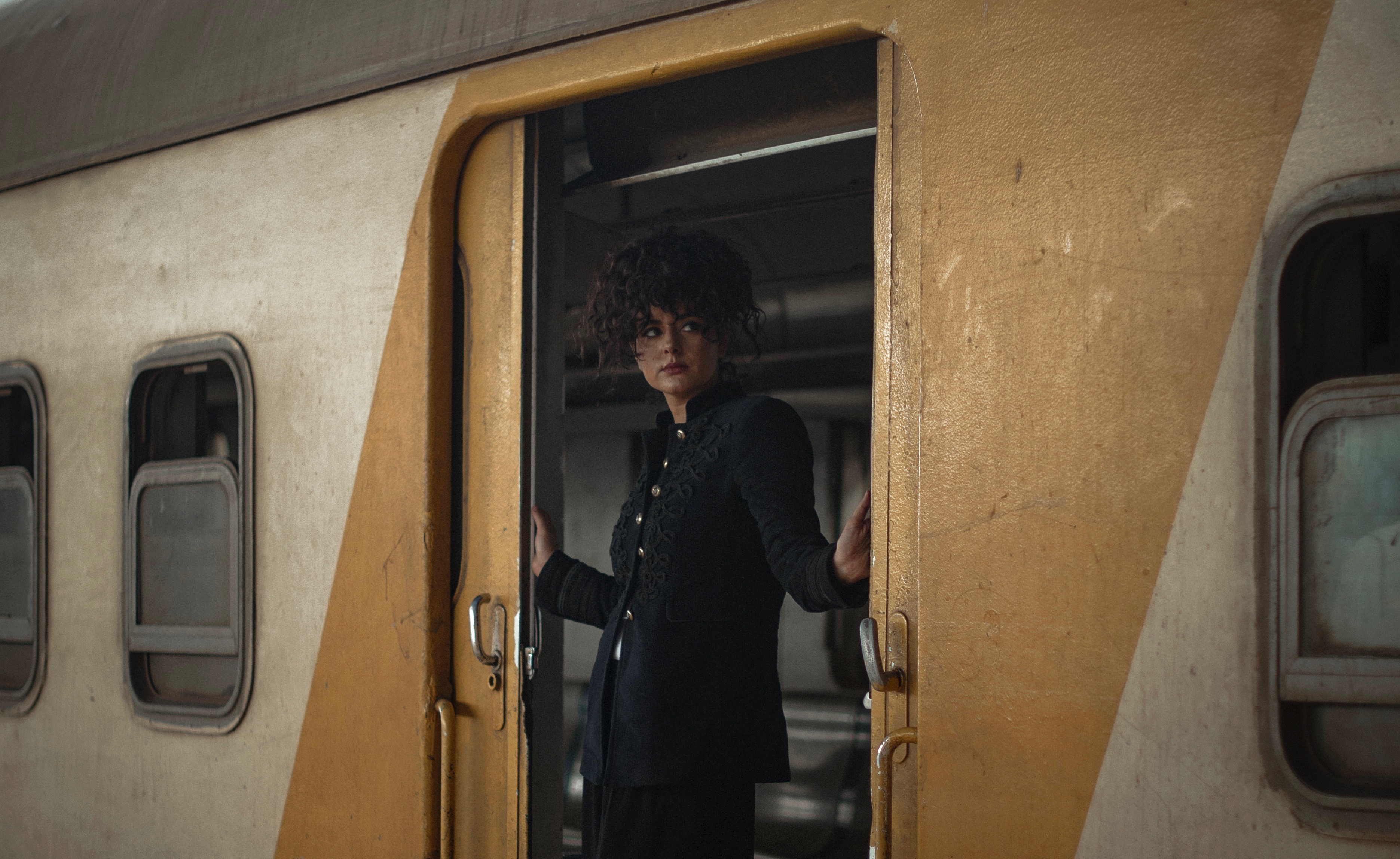







.jpg)

.jpg)
